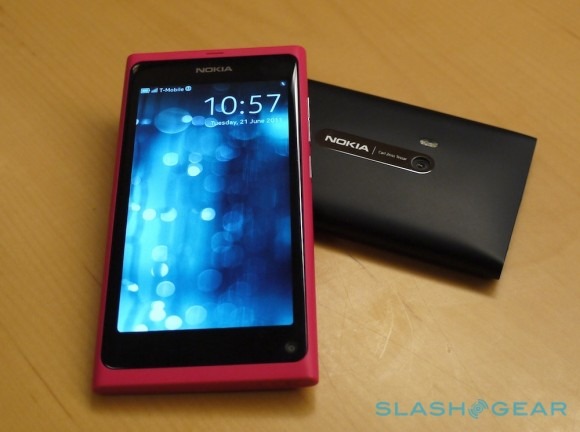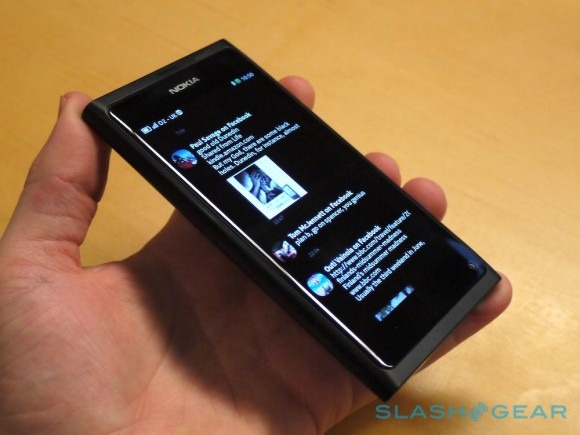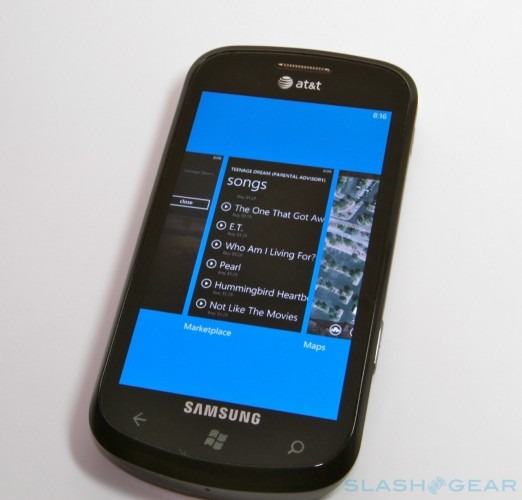Why Nokia's N9 Leaves Me Confident About Windows Phone
Two big smartphone announcements this morning, and two considerable insights into the prospects of an ailing cellphone giant. Nokia's new N9 could, with its MeeGo OS, easily have been the Finns fiddling while Rome was burning; the technical previews of Windows Phone 7.1 Mango, meanwhile, could have shown up a platform desperately lagging behind its rivals iOS and Android. Make no mistake, today we've seen the biggest glimpse so far of Nokia's future.
On the one hand, we have the software. Our technical preview of Windows Phone 7.1 "Mango" went live overnight, detailing the changes Microsoft has made to its platform after eight months or so in the wild. There's a lot to like, too: the threaded messaging, boosted Live Tiles and intuitive multitasking system add up to a smartphone OS that finally feels ready for prime-time.
So closely timed you'd think it had been planned that way – though Nokia tells us it wasn't – the N9 made its debut. The new handset may not use Windows Phone, instead being Nokia's first (and, for 2011, only) MeeGo device, but it's also a good indication of the company's design direction for the future. Although MeeGo has had far from an easy path to market, the N9 is impressively complete even in the prototype form we played with today.

Much of that is its hardware polish. Nokia CEO Stephen Elop had said back at the Windows Phone announcement that MeeGo would be used to explore potential avenues of "future disruption in the mobile ecosystem" and indeed the N9 brings several new elements to the table. The company is particularly proud of the precision-machined chassis, carved from a solid chunk of polycarbonate, into which the battery, components and display are layered. Scratch the surface and – since it's black, cyan or magenta all the way through – there's no bare metal or plain plastic to be exposed. Meanwhile, it also allows for better antenna performance; as Marko Ahtisaari, SVP of Nokia Design told us today, "the N9, you can hold any way you like, [and] still make calls, still connect to WiFi."
It also demonstrates Nokia's commitment to pentaband WCDMA, something rival companies are still yet to wade into. The N9 will play quite happily on both AT&T and T-Mobile USA's networks (as well as across Europe and Asia) with a single SKU good for both carriers. The NFC, used not for complex mobile payments schemes but to reduce any brain-ache involved in pairing accessories, is a perfect example of hiding technical complexity behind the curtain.
Nokia expects the N9 to be a popular device, especially to those who don't really know – or care – what a "smartphone" is and how it's different from whatever device they've been using so far. Nonetheless, it's also likely to remain a relatively niche product. As a test bed, though, to give us an insight into Nokia's Windows Phone strategy, there's plenty to leave us hopeful.

It looks like that five-band WCDMA is here to stay; in effect – until rivals wake up, at least – making pentaband something of an exclusive benefit to Windows Phone. We'd be very surprised if the polycarbonate chassis didn't show up again too, having the benefit of being more resilient than metal, not require painting, and avoiding any embarrassing signal issues.
Elop has previously that Nokia doesn't intend to change Windows Phone for the sake of it, only in ways which the company believes will better position its particular products or evolve the platform as a whole for the benefit of all OEMs. Today, Ahtisaari suggested that the company's goal with the N9 had been to "design a better way to use a phone" by "observing people, listening, watching how technology fits into the landscape of people's lives ... innovating hardware and software together, to create something [that is] a seamless whole as a product."
It's all strikingly similar to Microsoft's comments about Windows Phone and its attitude towards mobile devices. Ahtisaari pointed out that the fundamental issue with smartphones is that they're always too big in the pocket and too small outside of it; hence the N9's fascia being dominated by its touchscreen, and its UI being intended for "glanceable" usage. That's the same message Microsoft has been pushing with Windows Phone; as Vincent wrote in our Mango preview, "not just offer up the same content you'd find on the desktop, only on a smaller display, but to better format information so that it's easier to consume on the move."
With that in mind, we'd love to see some of the MeeGo tweaks carried over to Nokia's interpretation of Windows Phone. The double-tap to wake up the display is a beautifully intuitive touch; unfortunately the swipe-to-switch system is probably too different from Microsoft's own multitasking setup in Mango for it to be carried over from the N9, though we could imagine a hybrid of the two that would make jumping between apps even more straightforward.

Back in the pre-smartphone days, Nokia's reputation was one of ease-of-use. Cellphone buyers trusted the brand – and replaced old Nokia handsets with new – because of the minimal learning curve and the consistency of the interface. Over its various iterations, however, Symbian shifted further away from that usability, something MeeGo and the N9 attempts to reverse. Little things, like the swipe gesture being from where your thumb would normally rest at the edge of the display – and which just so happens to be where you'd have traditionally found the send/end buttons on a physical keypad – as well as the "2.5D" curved display glass which joins seamlessly to the chassis so as to avoid jarring your thumb as you reach the edges.
The N9 – and MeeGo's – promise will invariably reignite arguments over whether Nokia made the right decision with Windows Phone. There's a big difference between what's in effect an OS experiment and the sort of broad play for the smartphone market that Microsoft is making with Mango, however. What the N9 does achieve is leaving us more confident about the Nokia and Microsoft partnership as a whole. The software has ripened quickly and Nokia has demonstrated it still has hardware – and software – skills to be reckoned with. Q4 and the first Nokia Windows Phone devices can't come soon enough.
More on the Nokia N9 – including video – in our hands-on report.
